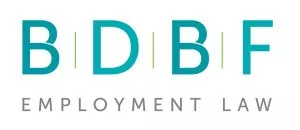An Employment Tribunal has ordered an employer who lost an equal pay claim to conduct, and publish the findings of, an equal pay audit showing whether it is paying men and women equally where required. The employer was also ordered to pay compensation of over £2 million to the female banker who brought the claim.
What happened in this case?
Ms Macken was a female banker working for BNP Paribas in London. She brought equal pay and sex discrimination claims against the Bank. She alleged that she had had been paid less than a male comparator, both in terms of basic pay and bonuses. She also complained that she had been the victim of sex discrimination at work, which included being spoken to in a demeaning way on numerous occasions and having a witch's hat left on her desk one day by male colleagues.
In 2019, Ms Macken succeeded in her claims and a remedy hearing was due to take place in May 2020. This was postponed due to the pandemic and eventually went ahead in Spring 2021. The remedy judgment was published in February 2022 - and it had a considerable sting in its tail for the Bank.
What remedy was ordered by the Employment Tribunal?
The total compensation award was in excess of £2.08 million and included £401,797 for the equal pay claim, £860,120 for future losses, £35,000 for injured feelings and £15,000 for aggravated damages. Notably, aggravated damages was awarded in this case because the Bank had not offered Ms Macken a "genuine and heartfelt" apology and had failed to sanction one of the main perpetrators of her mistreatment. The award also included the sum of £317,016 for failing to deal with Ms Macken's grievances in accordance with the Acas Code of Practice on Disciplinary and Grievance Procedures.
You might think that the reputational damage, £2 million compensation award and its own legal fees was punishment enough for the Bank. However, the most painful bit of the remedy judgment was yet to come.
The Tribunal went on to order the Bank to carry out an equal pay audit under the Equality Act 2010 (Equal Pay Audits) Regulations 2014 (Regulations). This is the first time that an Employment Tribunal has made such an order. The Tribunal said that the purpose of the audit is to enable a comparison of pay to explore whether the Bank is paying men and women equally where required.
Why did the Employment Tribunal order the Bank to conduct an equal pay audit?
Importantly for employers, the Tribunal noted that they did not have any discretion about whether to order the equal pay audit. This is because the Regulations state that such orders must be made where there have been breaches of equal pay law, unless the case falls within one of several exemptions.
For example, there are exemptions for micro businesses (i.e. businesses with fewer than 10 employees) and new businesses (i.e. businesses which began to carry out business in the year prior to the date of the claim). An employer will also be exempt where it has conducted an appropriate equal pay audit in the previous three years. None of these applied to the Bank.
However, there are further exemptions available which the Bank sought to rely upon, namely that:
- it is not necessary to conduct an equal pay audit in order to identify the remedial action needed;
- the breach was a one-off and there is no reason to think there may be other breaches; or
- the disadvantages of conducting an equal pay audit would outweigh the benefits.
The Bank's arguments and the Tribunal's responses are discussed below.
Was it necessary to conduct an equal pay audit?
The Bank's position was that it understood what action was needed to prevent equal pay breaches occurring or continuing without the need to conduct an equal pay audit. It highlighted that it had conducted internal equal pay reviews and had a remedial programme in place to address anomalies that may have existed.
The Tribunal accepted that the Bank had taken the liability judgment seriously and was making "excellent strides in the right direction". However, this did not bring them within the exemption. The Tribunal noted that such cultural shifts take many years. More damningly, the Tribunal made a number of criticisms of the Bank's approach.
- The Bank has chosen to retain an opaque pay system, albeit with introduction of increased transparency around its job hierarchies.
- The Bank had provided very little information about its internal equal pay reviews. They offered no information on the comparative process undertaken or how they could be confident that they had compared roles of equal value. Nor was any information given on the approach taken to material factors that justify pay differences between men and women. Further, no examples of the output of the reviews were provided to the Tribunal.
- The Bank's internal reviews did not extend to bonuses, even though the Tribunal's finding had covered bonuses. The Bank's position was that controls and checks were included in the bonus approval process to avoid discrimination. However, no information was given to the Tribunal about the nature of such checks or how discrimination was avoided.
In other words, much greater transparency was needed from the Bank if they wished to rely upon this exemption.
Was the equal pay breach a one off?
The Bank argued that the breach of equal pay law was a one-off in Ms Macken's case and there was no reason to think that there were any further breaches afoot. The Tribunal rejected this argument, noting that a significant factor that led to Ms Macken's claims being upheld was the comparison of the Bank's pay policies and practices with the recommendations set out in the EHRC's Statutory Code of Practice and Equal Pay Statutory Code. The Tribunal had found that the Bank's practices fell short of the recommendations by a significant degree and largely because "it chose to have an opaque pay system in common with other financial sector organisations". The logical conclusion was that other women working at the Bank may have been in the same position as Ms Macken.
Would the disadvantages of conducting the equal pay audit outweigh the advantages?
The Bank's only argument here was that an equal pay audit would duplicate the work it would undertake for its own internal equal pay review process. The Tribunal gave this argument short shrift, noting that the Bank did not need to undertake an internal review if the equal pay audit could provide a substitute for that process.
What does the Bank now have to do?
Having rejected the Bank's arguments that it fell within one of the exemptions, the Tribunal ordered them to produce an equal pay audit by 30 June 2022.
The audit must contain the relevant "gender pay information" for all those employed by the Bank between 1 January 2021 and 31 December 2021 (suitably anonymised). "Gender pay information" covers all monetary forms of remuneration including basic pay, pension contributions, allowances and discretionary bonuses, but not benefits in kind. Included within the scope of the audit are those whose employment ended within that period, employees absent on various forms of leave (and perhaps not in receipt of full pay) and both full and part-time employees. The Tribunal said the Bank should deal with these complexities via the use of pro-rated calculations.
The audit must identify any difference in pay between men and women and must include a "sophisticated analysis"whereby the Bank explains its approach to equal value. Finally, the audit must explain the reasons for any potential equal pay breach identified by the audit and set out a plan to avoid equal pay breaches occurring or continuing.
The Tribunal said that around six months was a "sufficiently generous timescale" to complete all of this work.
What happens after the equal pay audit has been completed?
The Bank's nightmare does not end there.
After the equal pay audit has been submitted to the Tribunal, it will determine whether the audit complies with the Tribunal's order. If it does not, the Tribunal may order the Bank to amend the audit until it is compliant. In these circumstances, it may also order the Bank to pay a relatively nominal penalty of £5,000. If an amended audit also falls short, further penalties may be ordered.
Once the audit is deemed compliant, the Bank will have 28 days to publish it on its website and leave it there for at least three years. It must also inform everyone whose gender pay information was included in the audit where they can obtain a copy. Therefore, this will cover both current and former staff.
If publication of the equal pay audit would result in a breach of a legal obligation then the Bank may publish a redacted version, or potentially not publish it at all. However, the Bank will have to explain its position to the Tribunal, giving the reasons for publishing a redacted version or withholding publication altogether. Ultimately, if the Tribunal is not satisfied with the reasons given, it can force publication of the equal pay audit.
What does this mean for employers?
Employers facing equal pay claims must always remember to factor in the risk of a Tribunal ordering an equal pay audit should they lose the claim. As noted in this case, the Tribunal has no discretion about whether to make such an order, unless one of the exemptions apply.
As well as the considerable amount of work involved in producing the equal pay audit itself, the audit must be made public. Where the audit reveals further unequal pay practices, this is likely to harm the employer's reputation, damage employee relations and, potentially, trigger further equal pay claims.
Further, the employer must have committed to a plan to avoid equal pay breaches occurring or continuing. In future disputes, such employers should expect claimants to scrutinise what steps have been taken and capitalise on any failure to implement such plans.
Macken v BNP Paribas London Branch
The content of this article is intended to provide a general guide to the subject matter. Specialist advice should be sought about your specific circumstances.

